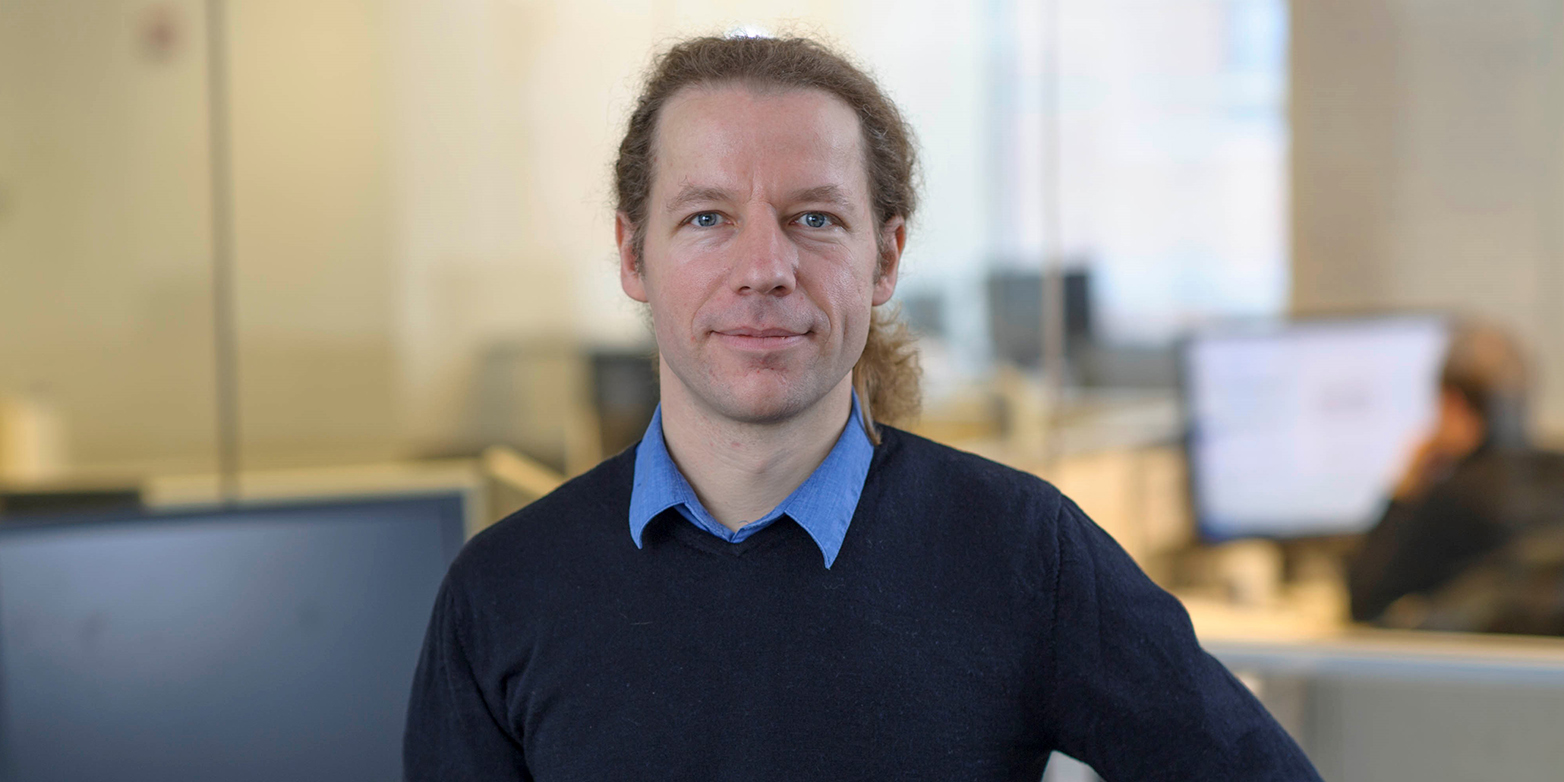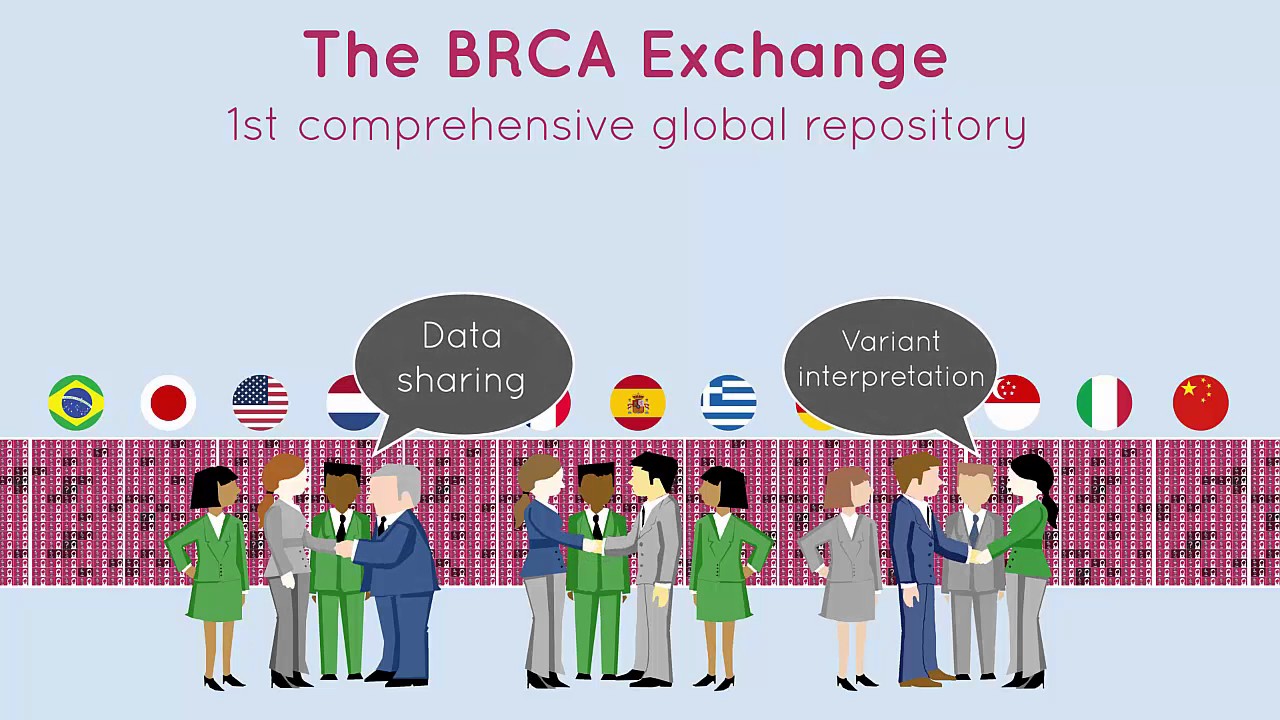“We have succeeded in sharing genetic data across national borders”
ETH Professor Gunnar Rätsch played a major part in creating the biggest public database for anonymised information on two important breast cancer genes. The database helps to improve the treatment of patients. ETH News spoke with him about the background, his motivation and the challenges such a project presents.

ETH News: Why is it so important to bring together as much data on genes as possible in one place?
Gunnar Rätsch: As part of the international BRCA Challenge project, we brought together the information relating to the BRCA1 and BRCA2 genes. The number of variants of these two genes in the population is incredibly high. While some of them indicate that a woman has the general low risk of developing breast cancer, other variants are linked to a significantly increased risk of cancer (see box). Many of these variants are extremely rare, which is what makes having an extensive database so important. The more comprehensive the database, the higher the likelihood that we will be able to match someone who has a rare variant with other people who have the same variant and for whom information on their risk of breast cancer is available. This information is an important element in, say, advising women from families where cancer is prevalent, or determining early on that there is an increased risk of cancer.
How did this project, which was initiated by the Global Alliance for Genomics and Health, come about?
In the scientific community, we had realised that in many countries and at many institutions there were genomic and health-related data sets that were too small on their own to be useful in clinically characterising rare gene variants. These databases would be much more valuable if they were unified. However, data sharing across institutional and national boundaries is far from straightforward. That’s one of the reasons the Global Alliance for Genomics and Health was set up. Its goal is to make it easier to share genomic and medical data. On a technical level, the Global Alliance sets joint data standards, and from a legal and ethical level, it frames policy and develops data security concepts for data sharing. The BRCA Challenge started out three years ago as one of the Global Alliance’s initial pilot projects, with the aim of demonstrating the feasibility and benefits of international data sharing.
Why did you focus on the BRCA1 and BRCA2 genes?
Because they are both extremely relevant genetic markers, but also because everyone was talking about them when we had the idea for the project. The actor Angelina Jolie had just announced that she’d had both breasts removed as a preventive measure because she carries a genetic variant of BRCA1 that is associated with a high risk of breast cancer. At the same time, an American company called Myriad Genetics has for a long time held a patent on the two breast cancer genes. The company markets a test for these genes, has enjoyed a monopoly in this area for many years and kept the resulting patient data to itself. The company is widely regarded as being diametrically opposed to the rest of the research community, and it has questioned the validity of publicly available data. That spurred us on even more: we wanted to show that it is possible to derive information that is just as good by combining publicly held data.
What have you achieved since the project was launched?
First off, we had to get all the information from the various databases onto one platform. These databases were created in response to local initiatives and weren’t immediately compatible with one another. Now, all the combined information is anonymised and easy to access on the external pageBRCA Exchangecall_made web platform. We currently store data on more than 20,000 genetic variants, and for more than 7,250 of them, we have verified information as to their clinical relevance – whether they are indicative of cancer or not. As part of our project, we also develop algorithms to automate this way of classifying variants.
Is your information now better than what Myriad Genetics has?
That’s hard to say. The majority of the company’s data isn’t public, so we can’t compare it with ours. But in general I think it’s only a question of time before we have more and better-quality data. Our information will be publicly available free of charge.

Scientists from two dozen institutions around the world are involved in the project. What was your contribution, and what has ETH Zurich achieved?
I’ve been involved from the outset as one of the people behind the idea. Back then, I was still working at the Memorial Sloan Kettering Cancer Center in New York. For the first few years I headed up the team of software developers who built the BRCA Exchange web platform. The wider team of software developers includes two people from my group. At ETH, we developed a external pagesmartphone appcall_made that gives users straightforward access to the data. This is particularly useful for doctors and genetic counsellors. It lets them look up whether a patient’s genetic variant is already documented and perhaps even classified as pathogenic. Users of the app can also subscribe to a service that will notify them when new information on a particular variant becomes available.
What’s next for the project?
There are plans to integrate data from additional countries into the platform, so we can classify even more variants. We’re working closely on this with several South American, European and Asian countries whose participation would greatly benefit the project. We’re already in a position to say that the BRCA Challenge has clearly demonstrated that international data sharing can work. We humans carry a great many other genes that are related to illnesses, and so we also consider the project to be a model that can be applied to other genetic markers.
BRCA1 and BRCA2
The BRCA1 and BRCA2 genes contain the blueprints for enzymes that repair damaged DNA. Most people carry “healthy” BRCA variants – so their repair enzymes are in working order. However, a small section of the population (some 0.3 percent) carries genetic variants that lead to changes in the repair enzymes that impair their functioning. These people’s genes tend to accumulate mutations and their risk of breast or ovarian cancer is considerably higher.
Reference
Cline MS et al.: BRCA Challenge: BRCA Exchange as a global resource for variants in BRCA1 and BRCA2, PLOS Genetics 2018, doi: external page10.1371/journal.pgen.1007752call_made
